The Ultimate Microwave Drying Pet Food Machine Guide to 2024
Introduction to Microwave Drying Pet Food Machine
Microwave drying pet food machines are advanced equipment used in the pet food industry to efficiently dry and preserve pet food products. These machines utilize microwave technology to rapidly remove moisture from pet food, ensuring longer shelf life and maintaining the nutritional value of the food.
One of the key features of microwave drying pet food machines is their ability to penetrate the food evenly, ensuring uniform drying throughout the product. This results in a consistent texture and quality, which is crucial for maintaining consumer satisfaction and brand reputation.
Another important aspect of microwave drying pet food machines is their efficiency and speed. Compared to traditional drying methods, such as hot air or freeze drying, microwave drying significantly reduces processing time, allowing manufacturers to increase production output and meet growing market demands.
Additionally, microwave drying pet food machines are known for their versatility and adaptability to different types of pet food products. Whether it's kibble, treats, or wet food, these machines can effectively dry a wide range of formulations without compromising on quality or nutritional integrity.
In summary, microwave drying pet food machines play a vital role in the pet food industry by offering efficient, fast, and versatile drying solutions that help manufacturers produce high-quality products to meet the needs of pet owners.
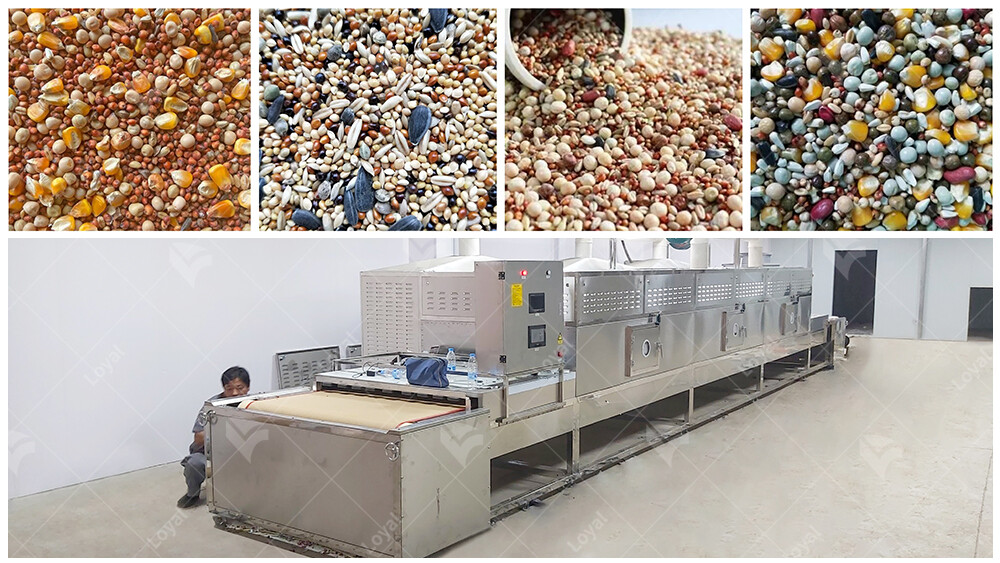
Advantages of Microwave Drying Pet Food Machine
One of the primary advantages of using a microwave drying pet food machine is its ability to preserve the nutritional quality of the food. Unlike traditional drying methods that can degrade vitamins, minerals, and other essential nutrients, microwave drying preserves the nutritional integrity of the ingredients, ensuring that pets receive the necessary nutrients for their health and well-being.
Another significant advantage of microwave drying pet food machines is their energy efficiency. These machines require less energy compared to conventional drying methods, such as hot air or freeze drying, resulting in lower operating costs and reduced environmental impact.
Furthermore, microwave drying pet food machines offer precise control over the drying process, allowing manufacturers to achieve the desired moisture content and texture for their products. This level of control ensures consistency and uniformity across batches, enhancing product quality and consumer satisfaction.
Lastly, microwave drying pet food machines are designed for ease of use and maintenance. With intuitive controls and minimal moving parts, these machines are easy to operate and require less downtime for maintenance and cleaning, maximizing productivity and profitability for pet food manufacturers.
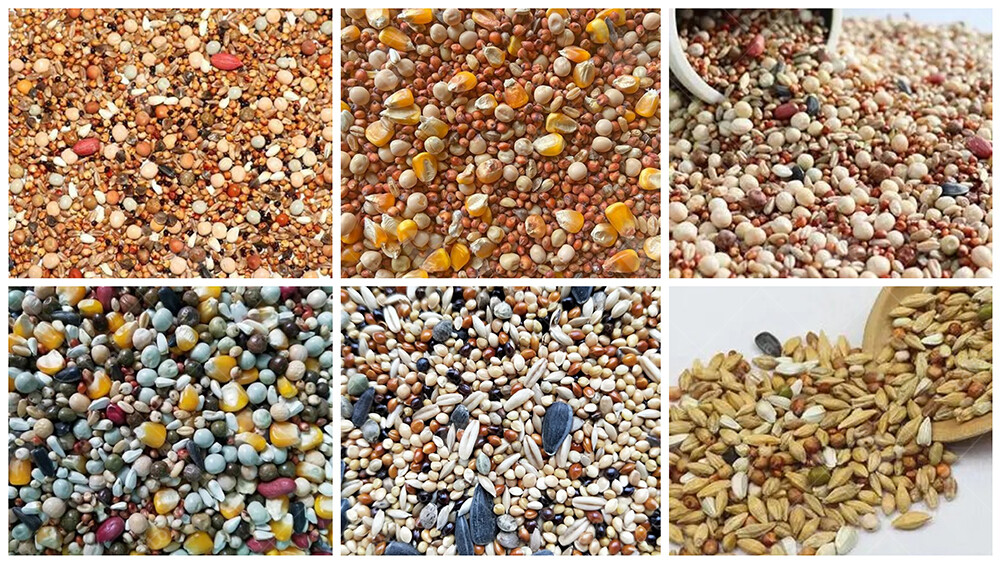
Quality Control and Safety Measures in Microwave Drying Pet Food Production
Quality control and safety measures are paramount in microwave drying pet food production to ensure the final product meets high standards of quality, safety, and nutritional value.
In pet food manufacturing, the first step in maintaining quality control is sourcing high-quality ingredients. Raw materials should be carefully selected, ensuring they meet specific nutritional requirements and are free from contaminants. Additionally, regular testing and analysis of ingredients can help identify any potential issues early in the production process.
Once the ingredients are prepared, proper sanitation practices are crucial to prevent contamination. This includes maintaining clean production facilities, equipment, and tools, as well as implementing strict hygiene protocols for personnel involved in the manufacturing process. Regular sanitation audits and inspections can help identify and address any sanitation issues promptly.
During the microwave drying process, it's essential to monitor and control various parameters to ensure the desired drying outcome while preserving the nutritional integrity of the pet food. This includes controlling factors such as temperature, humidity, and airflow to achieve uniform drying and prevent overheating or under-drying of the product. Advanced monitoring systems and automation technology can help maintain consistent drying conditions and minimize the risk of quality defects.
Furthermore, comprehensive quality control measures should be implemented throughout the entire production process, from raw material intake to finished product packaging. This includes conducting regular quality inspections, sampling, and testing to assess product attributes such as moisture content, texture, color, and flavor. Any deviations from established quality standards should be promptly addressed to prevent the distribution of substandard products.
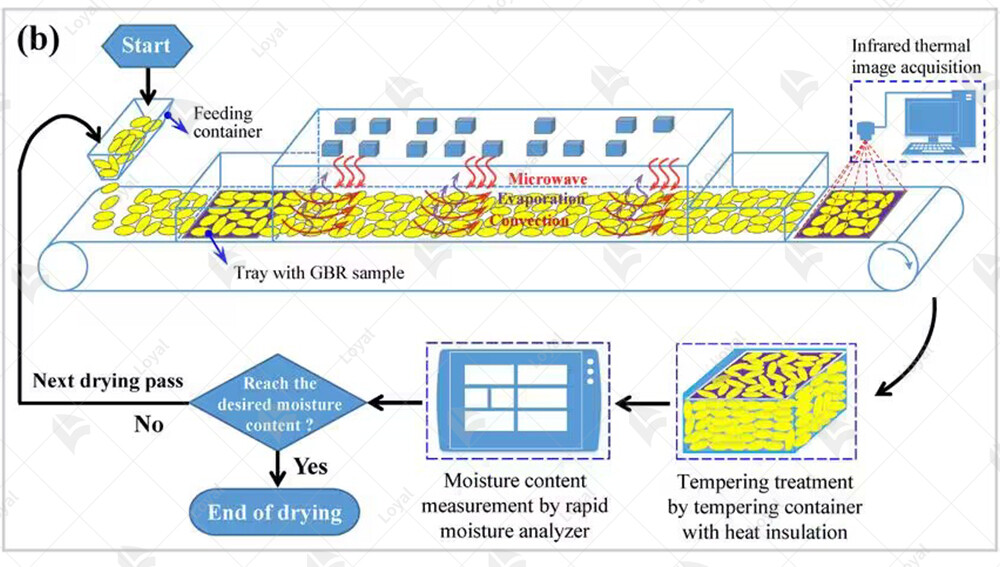
Emerging Trends and Innovations in Microwave Drying Technology for Pet Food
As the pet food industry continues to evolve, there are several emerging trends and innovations in microwave drying technology aimed at improving efficiency, quality, and sustainability.
One notable trend is the development of advanced microwave drying systems with enhanced control and automation capabilities. These systems utilize sophisticated sensors, data analytics, and machine learning algorithms to optimize drying parameters in real-time, resulting in more precise and consistent drying outcomes. By minimizing energy consumption and reducing processing time, these innovations contribute to overall operational efficiency and cost savings.
Another emerging trend is the integration of renewable energy sources into microwave drying systems, such as solar power or biomass energy. By harnessing renewable energy, pet food manufacturers can reduce their environmental footprint and dependence on fossil fuels, aligning with sustainable production practices. Additionally, advancements in microwave technology have led to the development of more energy-efficient microwave generators and heating systems, further reducing energy consumption and greenhouse gas emissions.
In terms of product innovation, there is growing interest in the development of novel pet food formulations and ingredients optimized for microwave drying. This includes the use of alternative protein sources, functional ingredients, and natural additives to enhance the nutritional profile, palatability, and health benefits of pet food products. Additionally, advancements in packaging materials and design allow for extended shelf life and improved product freshness, maintaining quality and safety throughout storage and distribution.
Overall, the continued evolution of microwave drying technology presents exciting opportunities for pet food manufacturers to enhance product quality, efficiency, and sustainability while meeting the evolving needs and preferences of pet owners. By staying abreast of these emerging trends and innovations, manufacturers can remain competitive in the dynamic pet food market landscape.
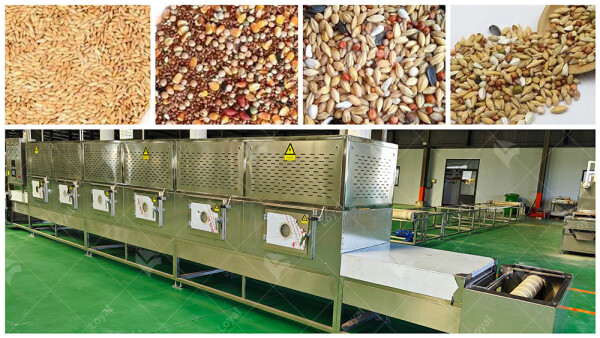
Applications of Microwave Drying in Different Types of Pet Food
Microwave Drying Pet Food Machines are versatile equipment capable of drying various types of pet food products, including kibble, treats, and wet food. This technology offers several advantages over traditional drying methods, making it suitable for a wide range of applications in the pet food industry.
In the production of dry kibble, microwave drying helps achieve uniform moisture distribution throughout the product, resulting in crispy texture and extended shelf life. For pet treats and snacks, microwave drying preserves the natural flavors and nutrients of the ingredients while efficiently removing moisture to ensure product stability.
Moreover, microwave drying is also used in the production of semi-moist and wet pet food formulations. By carefully controlling the drying parameters, manufacturers can achieve the desired texture and moisture content to meet consumer preferences. Overall, the versatility and efficiency of microwave drying make it a preferred choice for pet food manufacturers looking to optimize their production processes.
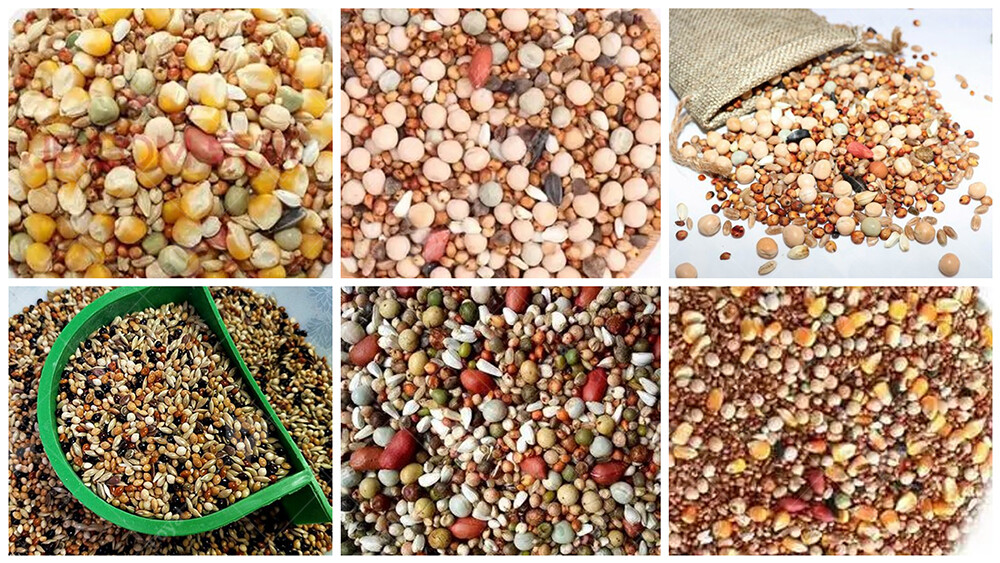
Factors to Consider When Choosing a Microwave Drying Pet Food Machine
When selecting a microwave drying pet food machine, several factors should be taken into account to ensure optimal performance and cost-effectiveness. Two prominent manufacturers in the industry, LOYAL and Coperion, offer advanced drying equipment with unique features and capabilities. Below is a simple comparison between LOYAL and Coperion machines:
Criteria | LOYAL Machine | Coperion Machine |
Capacity | Higher throughput capacity | Lower throughput capacity |
Energy Efficiency | Energy-efficient design | Energy-efficient design |
Control Systems | Advanced control systems for precise drying | Advanced control systems for precise drying |
Maintenance | Easy maintenance and cleaning | Easy maintenance and cleaning |
Cost | Competitive pricing | Higher initial investment but lower operating costs |
Overall, the choice between LOYAL and Coperion machines depends on specific production requirements, budget considerations, and desired features for microwave drying pet food. Both manufacturers offer reliable equipment tailored to meet the needs of pet food manufacturers seeking efficient and high-quality drying solutions.

Installation and Setup Guidelines for Microwave Drying Pet Food Machines
Installing and setting up a microwave drying pet food machine requires careful consideration to ensure optimal performance and safety. Here are some guidelines to follow:
1. Selecting the Proper Location: When installing a microwave drying pet food machine, choose a location that provides ample space for operation and maintenance. Ensure the area is well-ventilated to dissipate heat generated during the drying process. Additionally, consider proximity to power sources and utilities for seamless operation.
2. Leveling and Stability: Before installation, ensure the surface where the machine will be placed is level and stable. Use leveling tools to adjust as needed, as an uneven surface can affect the machine's performance and potentially lead to safety hazards. Proper leveling also helps prevent vibrations during operation, which can impact drying efficiency.
3. Connecting Power and Utilities: Follow manufacturer guidelines for connecting the machine to power sources and utilities such as water and air supply if applicable. Use appropriate wiring and connectors to prevent electrical hazards. Verify voltage and current requirements to avoid overloading circuits and ensure smooth operation.
4. Calibration and Testing: After installation, calibrate the microwave drying pet food machine according to manufacturer specifications. Conduct thorough testing to ensure all components are functioning correctly and producing the desired drying results. Make necessary adjustments to settings and parameters as needed for optimal performance.
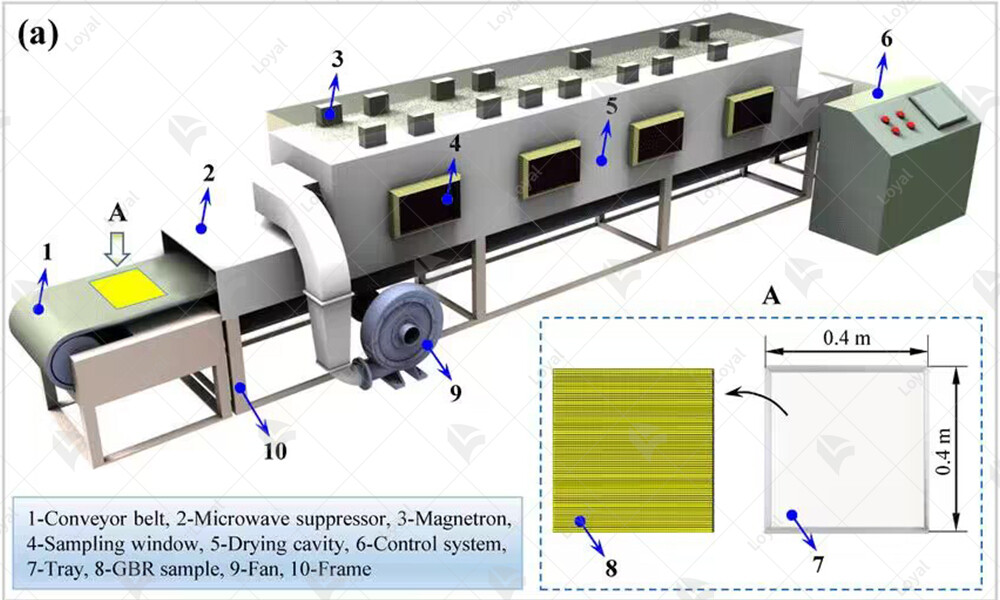
Maintenance Tips to Ensure Optimal Performance of Your Pet Food Dryer
Proper maintenance is essential for ensuring the longevity and efficiency of your microwave drying pet food machine. Here are some maintenance tips to follow:
1. Regular Cleaning: Clean the machine regularly to remove food residues, debris, and other contaminants that can accumulate during the drying process. Use approved cleaning agents and methods recommended by the manufacturer to avoid damage to sensitive components.
2. Inspecting Components: Routinely inspect all components of the pet food dryer, including the microwave generator, conveyor belts, and ventilation system. Look for signs of wear and tear, damage, or malfunction, and address any issues promptly to prevent further damage or breakdown.
3. Lubrication and Adjustment: Lubricate moving parts such as bearings, rollers, and gears according to manufacturer guidelines to reduce friction and wear. Periodically check and adjust tension on conveyor belts to maintain proper alignment and prevent slippage or jams.
4. Scheduled Maintenance Checks: Implement a scheduled maintenance program to perform routine checks and servicing at specified intervals. This may include replacing worn parts, recalibrating settings, and conducting performance tests to ensure optimal functionality.
By following these installation and maintenance guidelines, you can maximize the efficiency and longevity of your microwave drying pet food machine, ensuring consistent and high-quality results in pet food production.

Quality Control and Safety Measures in Microwave Drying Pet Food Production
Quality control and safety measures are paramount in microwave drying pet food production to ensure the final product meets high standards of quality, safety, and nutritional value.
In pet food manufacturing, the first step in maintaining quality control is sourcing high-quality ingredients. Raw materials should be carefully selected, ensuring they meet specific nutritional requirements and are free from contaminants. Additionally, regular testing and analysis of ingredients can help identify any potential issues early in the production process.
Once the ingredients are prepared, proper sanitation practices are crucial to prevent contamination. This includes maintaining clean production facilities, equipment, and tools, as well as implementing strict hygiene protocols for personnel involved in the manufacturing process. Regular sanitation audits and inspections can help identify and address any sanitation issues promptly.
During the microwave drying process, it's essential to monitor and control various parameters to ensure the desired drying outcome while preserving the nutritional integrity of the pet food. This includes controlling factors such as temperature, humidity, and airflow to achieve uniform drying and prevent overheating or under-drying of the product. Advanced monitoring systems and automation technology can help maintain consistent drying conditions and minimize the risk of quality defects.
Furthermore, comprehensive quality control measures should be implemented throughout the entire production process, from raw material intake to finished product packaging. This includes conducting regular quality inspections, sampling, and testing to assess product attributes such as moisture content, texture, color, and flavor. Any deviations from established quality standards should be promptly addressed to prevent the distribution of substandard products.
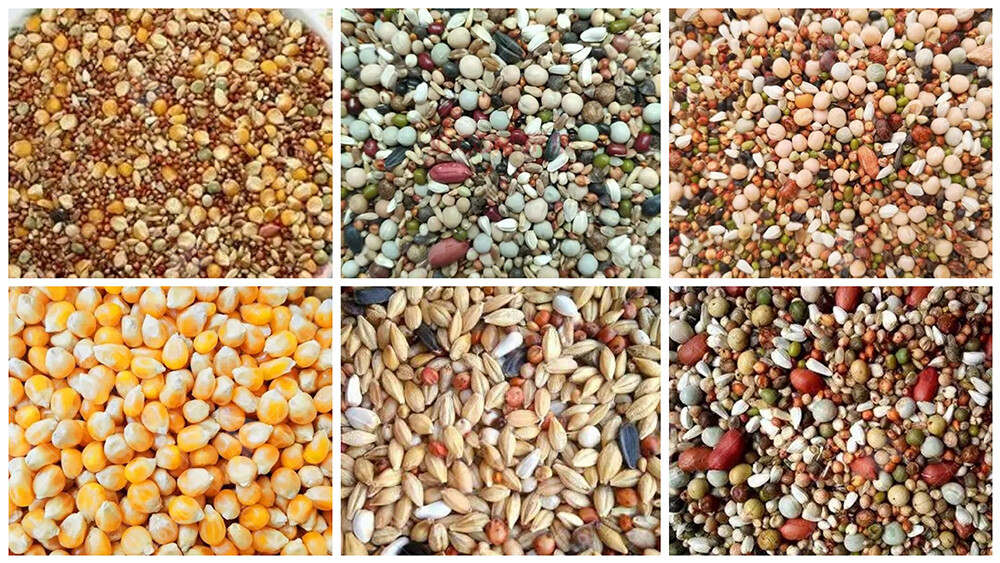
Emerging Trends and Innovations in Microwave Drying Technology for Pet Food
As the pet food industry continues to evolve, there are several emerging trends and innovations in microwave drying technology aimed at improving efficiency, quality, and sustainability.
One notable trend is the development of advanced microwave drying systems with enhanced control and automation capabilities. These systems utilize sophisticated sensors, data analytics, and machine learning algorithms to optimize drying parameters in real-time, resulting in more precise and consistent drying outcomes. By minimizing energy consumption and reducing processing time, these innovations contribute to overall operational efficiency and cost savings.
Another emerging trend is the integration of renewable energy sources into microwave drying systems, such as solar power or biomass energy. By harnessing renewable energy, pet food manufacturers can reduce their environmental footprint and dependence on fossil fuels, aligning with sustainable production practices. Additionally, advancements in microwave technology have led to the development of more energy-efficient microwave generators and heating systems, further reducing energy consumption and greenhouse gas emissions.
In terms of product innovation, there is growing interest in the development of novel pet food formulations and ingredients optimized for microwave drying. This includes the use of alternative protein sources, functional ingredients, and natural additives to enhance the nutritional profile, palatability, and health benefits of pet food products. Additionally, advancements in packaging materials and design allow for extended shelf life and improved product freshness, maintaining quality and safety throughout storage and distribution.
Overall, the continued evolution of microwave drying technology presents exciting opportunities for pet food manufacturers to enhance product quality, efficiency, and sustainability while meeting the evolving needs and preferences of pet owners. By staying abreast of these emerging trends and innovations, manufacturers can remain competitive in the dynamic pet food market landscape.
References
The following are five authoritative foreign literature websites in the field of industrial microwaves:
1. IEEE Xplore Digital Library
Website: [https://ieeexplore.ieee.org/]
2.ScienceDirect
Website: [https://www.sciencedirect.com/]
3. SpringerLink
Website: [https://link.springer.com/]
4. Wiley Online Library
Website: [https://onlinelibrary.wiley.com/]
5. PubMed
Website: [https://pubmed.ncbi.nlm.nih.gov/]
 Telephone :+86-531-55583139
Telephone :+86-531-55583139 WhatsApp :+86 13256674591
WhatsApp :+86 13256674591 Email :
Email :











